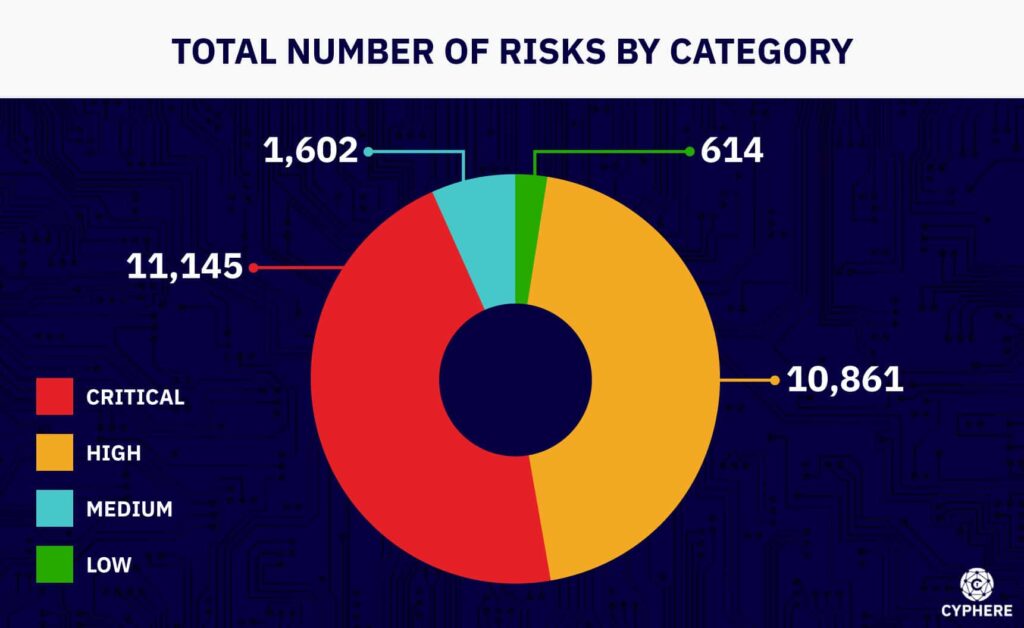Organisations of all sizes rely heavily on new technology such as cloud, mobile, web applications, and APIs, making them prime targets for cyberattacks. Penetration testing, which involves simulating a cyberattack to identify vulnerabilities in a system, is a crucial element of any cybersecurity strategy.
Traditional pen testing involves hiring a security professional to conduct a comprehensive assessment. However, a new approach called crowdsourced pen testing is gaining traction.
What is crowdsourced penetration testing?
Crowdsourced pen testing leverages a platform to connect organisations with a global community of ethical hackers, also known as crowdsourced pen testers. These crowdsourced pen testers compete to identify and report vulnerabilities within a predefined scope and set of rules.
How crowdsourced pen testing works
Engaging a diverse community of ethical hackers
The crowdsourced pen testing platform hosts various security researchers with varied skill sets and expertise. Organisations can choose testers based on specific criteria or open the testing to a broader pool.
Defining the scope and rules of engagement
Before the testing begins, the organisation clearly defines the scope of the systems and applications, along with any limitations or exclusions. Clear rules of engagement are established, outlining acceptable testing methods and what constitutes a valid vulnerability report.
Vulnerability submission and validation process
Testers identify and report vulnerabilities through the platform, providing detailed information and proof of concept (POC) to demonstrate exploitability. The platform facilitates a validation process where a dedicated internal security professional team assesses the reported vulnerabilities and confirms their legitimacy.

Secure code is an essential element for business growth
Show your customers and supply chain you can manage application risks with secure coding practices.
Reward system and payment structure
Crowdsourced pen-testing platforms typically offer a reward system that motivates testers to find and report critical vulnerabilities. Rewards can be monetary or based on reputation points within the platform’s community.
Benefits of crowdsourced penetration testing
More comprehensive coverage and diverse skill
Crowdsourced testing taps into a vast talent pool, providing access to a broader range of expertise than a single traditional pen tester. This diversity can lead to the identification of more vulnerabilities, especially those that might be missed by a conventional pen tester with a specific approach.
Cost-effectiveness
Crowdsourced pen testing can be more cost-effective than traditional pen tests. Organisations typically only pay for identified vulnerabilities rather than a fixed fee for testing.
Faster turnaround times
With multiple testers working simultaneously, crowdsourced pen testing can be completed much faster than a traditional pen test, especially for larger or more complex systems. This allows organisations to address security issues more quickly.
Continuous security testing
Unlike traditional pen tests, typically conducted periodically, crowdsourced testing can be ongoing. This continuous testing approach helps identify and address vulnerabilities as they emerge, improving an organisation’s overall security posture.
Challenges with crowdsourced pen tests
There are a few real challenges that slow the adoption of crowdsourced pen testing in the mainstream markets. These are:
Quality control and false positives
With a large pool of pen tester syndrome, there’s a higher chance of receiving false-positive reports, which can waste valuable time and resources investigating non-existent vulnerabilities. A robust validation process is crucial to ensure the quality of reported findings.
Data security concerns
Organisations must carefully consider the sensitivity of the data involved in the testing process. Strict access controls and data encryption measures are essential to mitigate the risks of exposing internal systems to a broader audience.
Legal and compliance considerations
Depending on the industry and regulations, legal considerations may arise regarding data privacy and ownership of discovered vulnerabilities. Consulting with legal counsel before launching a crowdsourced pen testing program is essential.
Lack of control over testing methodology
Organisations have less control over specific tools and methods used by crowdsourced testers compared to a traditional pen test, where the approach is defined beforehand.
Legal considerations when implementing crowdsourced penetration testing
Despite few companies and bug bounty cyber security platforms adopting enterprise crowdsourced penetration testing model, it is not widely deployed and merely a fraction of the traditional penetration testing services market. Some of the legal considerations associated with this implementation model are:
- Data privacy regulations: Ensure compliance with relevant data privacy regulations, such as GDPR (General Data Protection Regulation) or CCPA (California Consumer Privacy Act) regarding data handling and potential breaches.
- Vulnerability ownership: Clearly define ownership rights over discovered vulnerabilities in terms of service for the crowdsourced pen-testing platform.
- Disclosure and notification: Establish a process for disclosing vulnerabilities to the organisation and notifying affected users of legal requirements.
Examples of crowdsourced penetration testing
High-profile bug bounty programs run by companies like Google, Microsoft, and Facebook are essentially a form of crowdsourced security testing. These programs incentivise security researchers to find and report vulnerabilities in their software and platforms. Here are some specific examples of well-known bug bounty programs:
- Google Vulnerability Rewards Program (VRP): This program offers rewards for finding vulnerabilities in Google products like Chrome, Android, and Google Cloud Platform.
- Microsoft Bounty Program: Microsoft offers rewards for vulnerabilities discovered in its software, services, and hardware.
- Facebook Bug Bounty Program: Facebook incentivises researchers to find vulnerabilities in their platform and applications.
These high-profile programs demonstrate the effectiveness of crowdsourced security testing in identifying critical vulnerabilities and improving overall security posture.
When to use which approach? Crowdsourced Vs. Traditional pen testing
Understanding when to opt for crowdsourced or traditional penetration testing is essential for optimising your cybersecurity strategy. Let’s go through each option.
When to Choose Crowdsourced Penetration Testing?
- Budget Constraints: This is ideal for organisations with limited budgets due to its pay-per-vulnerability model.
- Need for Rapid Results: It is best when a quick turnaround is essential, leveraging multiple simultaneous testers.
- Diverse Vulnerability Discovery: Crowdsourced pen tests are optimal for uncovering various vulnerabilities through diverse skill sets and perspectives.
- Continuous Testing Requirements: This model suits organisations needing ongoing security assessments.
When to Choose Traditional Penetration Testing?
- Specific Methodology Requirements: This is preferred when you need control over testing methodology and tools.
- Minimising False Positives: This model is better suited when accuracy is crucial, as experienced teams generally produce fewer false positives and have a better understanding of the business context that goes into manual pen testing. It is important to note that being good on the technical front doesn’t mean you can deliver a penetration test better; it involves understanding the business logic, user functionalities modules and related integrations.
- Data Sensitivity Concerns: It is ideal for organisations with strict data privacy requirements involving fewer parties.
- Complex Legal Frameworks are more appropriate when operating within stringent legal and regulatory environments.

Cyber attacks are not a matter of if, but when. Be prepared.
Box-ticking approach to penetration tests is long gone. We help you identify, analyse and remediate vulnerabilities so you don’t see the same pentest report next time.
Considerations for Both Approaches
Cost Efficiency
Crowdsourced testing often proves more cost-effective for organisations with smaller budgets due to its pay-per-vulnerability model. Traditional testing typically involves fixed-fee engagements, which may increase overall costs but offer more predictable pricing.
Coverage and Expertise
Crowdsourced testing leverages diverse skill sets, potentially uncovering unique vulnerabilities that a single team might overlook. Traditional testing provides focused expertise but is limited to the knowledge of a specific team, which can be advantageous for specialised systems or industries.
Data Security
Crowdsourced testing requires robust access controls and encryption due to the involvement of multiple testers. Traditional testing typically involves fewer parties, potentially reducing data exposure risks, which can be crucial for susceptible environments.
Continuity
Crowdsourced testing can provide ongoing, continuous assessment of your security posture. Traditional testing is usually conducted as one-time or periodic engagements, offering in-depth analysis at specific points in time.
Choosing between crowdsourced and traditional penetration testing depends on your organisation’s needs, resources, and risk profile. Consider these factors carefully to determine the most effective approach for your cybersecurity strategy.
How Cyphere can help improve your security posture?
At Cyphere, we centre our work around service quality. Our CREST-accredited penetration testing services offer a consultative approach to cybersecurity, combining traditional and innovative testing methodologies.
- Tailored Assessments: We design our penetration tests to align with your specific industry, compliance requirements, and risk profile.
- Expert-Led Testing: Our CREST-certified testers bring deep expertise and a systematic approach to uncovering vulnerabilities.
- Comprehensive Coverage: We employ a wide range of testing techniques to ensure a thorough assessment of your systems.
- Clear Communication: Our reports are designed to be easily understood by technical and non-technical stakeholders, facilitating effective remediation.
- Ongoing Support: We don’t just identify vulnerabilities; we guide prioritisation and remediation strategies.
- Compliance Alignment: Our testing methodologies align with major compliance standards, helping you meet regulatory requirements.
Integrating crowdsourced and traditional pen testing approaches
For many large enterprise organisations, a hybrid approach combining crowdsourced and traditional penetration testing elements is the working model in recent times. However, these numbers are few and far between compared to the broader market. It can offer the best of both worlds in the following ways:
- Initial Assessment: Start with a traditional, in-depth penetration test to establish a baseline and address critical vulnerabilities.
- Continuous Monitoring: Implement a crowdsourced program for ongoing vulnerability discovery.
- Periodic Deep Dives: Schedule regular traditional pen tests to complement continuous crowdsourced efforts.
- Targeted Crowdsourced Campaigns: Use crowdsourced testing for specific applications or newly deployed systems.
- Validation and Prioritisation: Leverage internal security teams or trusted partners like Cyphere to validate and prioritise findings from crowdsourced efforts.
Crowdsourced penetration testing offers a dynamic approach to cybersecurity, leveraging diverse expertise to uncover vulnerabilities efficiently. As cyber threats evolve, this innovative method provides organisations with a powerful tool to enhance their security posture continuously.














